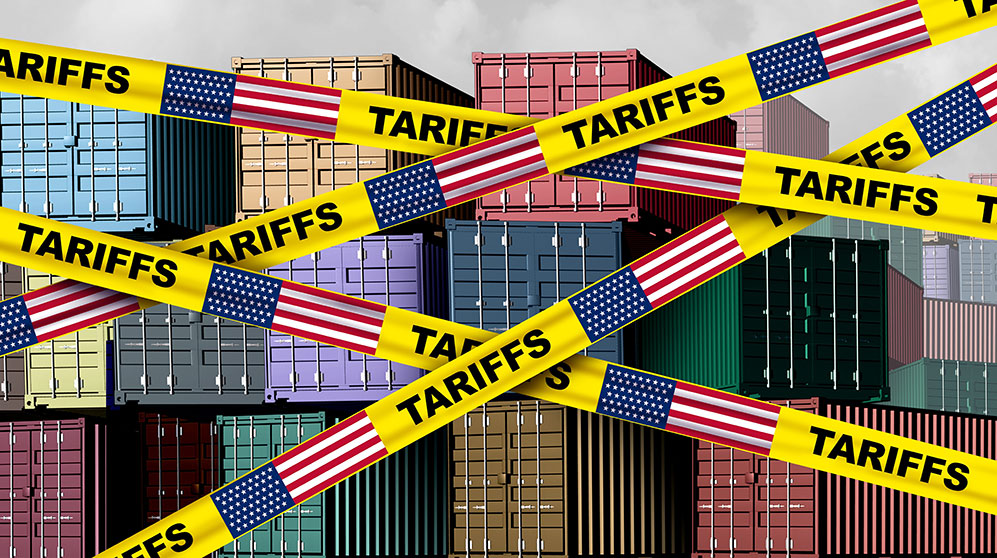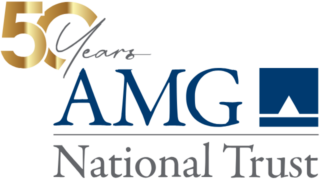How the SECURE 2.0 Act Helps Small Businesses
• 8 min read
- Brief: Retirement & Benefits

Get the Latest Research & Insights
Sign up to receive an email summary of new articles posted to AMG Research & Insights.

Small business owners worried about the bottom line when considering whether to offer a retirement benefit now have more affordable options.
The recently passed SECURE 2.0 Act of 2022 focuses like a laser beam on retirement issues. While pushing the age for Required Minimum Distributions (RMDs) to 73 and eventually 75 has garnered many of the headlines, the SECURE 2.0 Act includes more than 90 other provisions to promote savings, boost incentives and tax benefits for businesses, and offer more flexibility to those saving for retirement.
BENEFITS CAN OUTWEIGH COSTS
Retirement plans for workers are rare among small businesses. A recent study found that only 26% offered a 401(k) plan. Respondents believed their businesses were too small to qualify for one, that they could not afford to match payments, or that plans would be too expensive to set up and manage.
To the contrary, the lure of a quality 401(k) plan can be a substantial money-saver by reducing employee turnover costs.
- 401(k) plans can lead to cost savings of more than $100,000 in reduced employee turnover costs alone—roughly double the return on the initial costs of offering a 401(k).
- Across all industries, workers are 40% less likely to quit in the first year. For some jobs, this number springs up to 54%. The effect of retirement benefits on sustained employment is largest for companies in Personal Services sectors such as Retail and Food & Beverage, two sectors with significant turnover.
ONLY HALF OF WORKERS PARTICIPATE
On the workers’ side of the equation, about two-thirds have access to an employer plan but only about half contributed in 2021. That’s particularly concerning when considering that 48% of Americans age 55 or older reportedly have no retirement savings at all.
Employees may have a variety of reasons for not participating in a retirement account, such as other priorities for their income. By not taking part, they lose a pre-tax benefit and miss out on any matching contribution made by their employer.
10 THINGS ABOUT SECURE 2.0 EMPLOYERS AND WORKERS SHOULD KNOW
- Auto-enrollment. Starting in 2025, employers are required to automatically enroll employees in a 401(k) or 403(b) plan, if applicable, at a rate of at least 3% but not more than 10% of compensation. The amount includes an auto-escalation of 1% on the first day of each plan year following completion of a year of service until the contribution is at least 10% but no more than 15% of eligible wages. Businesses with 10 or fewer workers and new companies in business for less than three years would be excluded from the mandate. For those businesses, an employer can offer a small financial incentive (e.g., low-dollar gift cards) to entice employees to participate.
- Startup Credit. For businesses that have up to 50 employees without a retirement plan and establish a SEP IRA, SIMPLE IRA or 401(k) plan, SECURE 2.0 increases the small plan startup tax credit from 50% to 100% of eligible costs (capped at $5,000 per year) for the first three years the plan exists. Businesses with 51 to 100 employees are still eligible for tax credits—50% of administrative costs with the same $5,000/three-year cap. The new law also clarifies that small businesses joining a multiple employer plan (MEP) are eligible for the credit.
- Starter 401(k). Beginning in 2024, employers who do not already offer retirement plans will be allowed to sponsor “starter” 401(k) and 403(b) plans for employees who meet age and service requirements. These plans support employee contributions only (that is, no employer matching or profit-sharing contributions), with a total annual deferral limit of $6,000 and catch-up limit of $1,000. These limits are substantially lower than those available under traditional 401(k) and 403(b) plans (in 2023, $22,500, and $7,500 for catch-ups).
- Part-Time Worker Offerings. Beginning in 2025, part-time employees must be allowed to participate in employer-sponsored retirement programs once they meet the requirements. This applies to workers with more than 500 hours per year for two consecutive years or employees with over 1,000 hours on the clock within one year.
- Military Spouse Tax Credit. SECURE 2.0 establishes a tax credit for employers with up to 100 employees who make military spouses eligible for their retirement plans within two months of their hiring date, ensures that each military spouse is 100% vested in all employer contributions, and guarantees that every military spouse is eligible for any matching or nonelective contribution that they otherwise would only have qualified for at two years of service. The tax credit is equal to $200 per military spouse plus up to $300 in employer contributions per individual for up to three years.
- Student Loan Match. The 45 million Americans who owe a massive $1.75 trillion in student loan debt as of 2021, according to the Federal Reserve, may not have to choose between paying off student loans or contributing to retirement. Beginning in 2024, employers will be able to provide their employees with 401(k) contribution matches based on their employees’ student loan payments. In other words, qualified student loan payments can be treated as elective deferrals or employee 401(k) contributions and therefore applicable to a company’s matching policies.
- 401(k), IRA Catch-up Contributions. At age 50, you can fund your 401(k) with an additional sum, indexed to inflation, up to $7,500 in 2023. But SECURE 2.0 adds a “special” catch-up contribution limit for employees 60 to 63 years of age starting in 2025. For most 401(k) plans and other employer-sponsored retirement plans, the special catch-up contribution maximum for those ages is the greater of $10,000 or 1½ times the “standard” catch-up contribution amount for 2024. The $10,000 amount will be adjusted for inflation each year starting in 2026. For IRAs, traditional and Roth, the contribution maximum is adjusted for inflation each year—it jumps to $6,500 for 2023—but the catch-up contribution amount isn’t. It’s stuck at $1,000.
- Solo 401(k). SECURE 2.0 also provides parity for solo 401(k) plans with IRAs. A sole proprietor who is the business’s only employee can make a deferral election for compensation contributions to a solo 401(k) plan up until the date the tax year’s income tax return is due, but only for the plan’s first year. This expanded timeframe can promote adoption of a plan and allow for more information about the business’s earnings to be provided. This option applies for plan years beginning after December 29, 2022.
- Pared-down Paperwork. Retirement benefit rules and regulations can be overwhelming to navigate, even for larger companies with a suite of internal HR professionals. Small businesses lacking internal resources may be more exposed to reporting errors and associated fines. The new legislation cuts down on the paperwork required of plan sponsors and reduces penalties for certain reporting errors.
- Plan Portability. Retirement plan service providers can offer plan sponsors automatic portability services, transferring an employee’s low balance retirement accounts to a new plan when they change jobs. The change could be especially useful for lower-balance savers who typically cash out their retirement plans when they leave jobs, rather than continue saving in another eligible retirement plan. Employees who prefer not to take part can opt out.
AMG IS AN EXPERT IN SMALL BUSINESS RETIREMENT PLAN ADMINISTRATION
Designing a 401(k) plan, administering it effectively, and keeping it compliant with changing laws is a daunting task for many employers.
AMG can help businesses offer a more flexible plan specific to their participant population’s needs and which those employees truly value, helping to attract and retain valuable talent.
Our comprehensive retirement plan solutions include:
- Retirement plan specialists
- Plan design and administration
- Independent investment advice
- Investment management and asset custody
- Participant education and online tools
- Ongoing compliance and annual report preparation (Form 5500)
- Trustee expertise for both qualified and non-qualified plans
NEED HELP DESIGNING A PLAN FOR YOU AND YOUR TEAM?
To book a free consultation with a retirement plan specialist call 303-486-1480 or email with the best day and time to reach you.
FREQUENTLY ASKED QUESTIONS
WHAT IS THE SECURE ACT 2.0 RMD EXCISE TAX?
Excise tax applies to Required Minimum Distributions (RMDs) that are not taken by individuals from their retirement plans such as defined benefit (DB) and defined contribution (DC) plans. SECURE 2.0 decreases this tax from 50% to 25% for taxable years starting after December 29, 2022.
HOW DOES THE SECURE 2.0 ACT AFFECT SMALL BUSINESS?
The SECURE 2.0 Act of 2022 includes more than 90 provisions to promote employee savings, boost incentives and tax benefits for businesses to set up retirement plans and enhance benefits, and offer more flexibility to those saving for retirement.
CAN A SMALL BUSINESS SET UP A PENSION PLAN?
Small businesses can set up a retirement savings plan that is inexpensive and easy to maintain. The SECURE 2.0 Act allows a Starter 401(k) plan or a Solo 401(k) plan, though with lower contribution limits than other 401(k) plans. Employers also may contribute to a Simplified Employee Pension Plan (SEP), which uses IRA accounts and doesn’t require annual contributions, which is a good option for business owners who only want to contribute during high-profit years.
DO SMALL BUSINESSES HAVE TO MATCH 401(K) PLAN CONTRIBUTIONS?
When offering a 401(k) plan, small-business owners do not have to match employee contributions. You can offer your employees the retirement benefit of a 401(k) plan, while opting out of the match.
This information is for general information use only. It is not tailored to any specific situation, is not intended to be investment, tax, financial, legal, or other advice and should not be relied on as such. AMG’s opinions are subject to change without notice, and this report may not be updated to reflect changes in opinion. Forecasts, estimates, and certain other information contained herein are based on proprietary research and should not be considered investment advice or a recommendation to buy, sell or hold any particular security, strategy, or investment product.
Get the latest in Research & Insights
Sign up to receive a weekly email summary of new articles posted to AMG Research & Insights.



